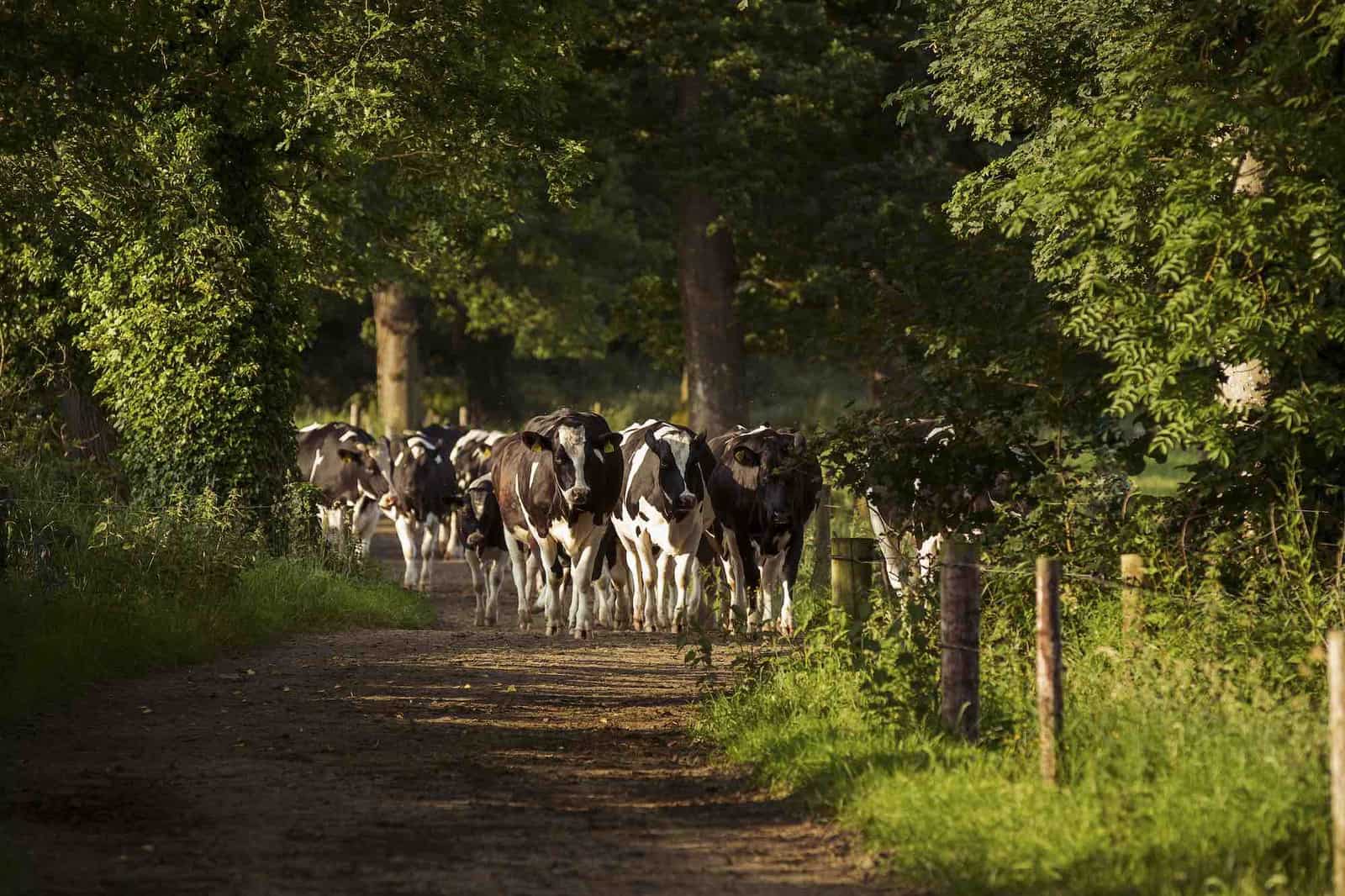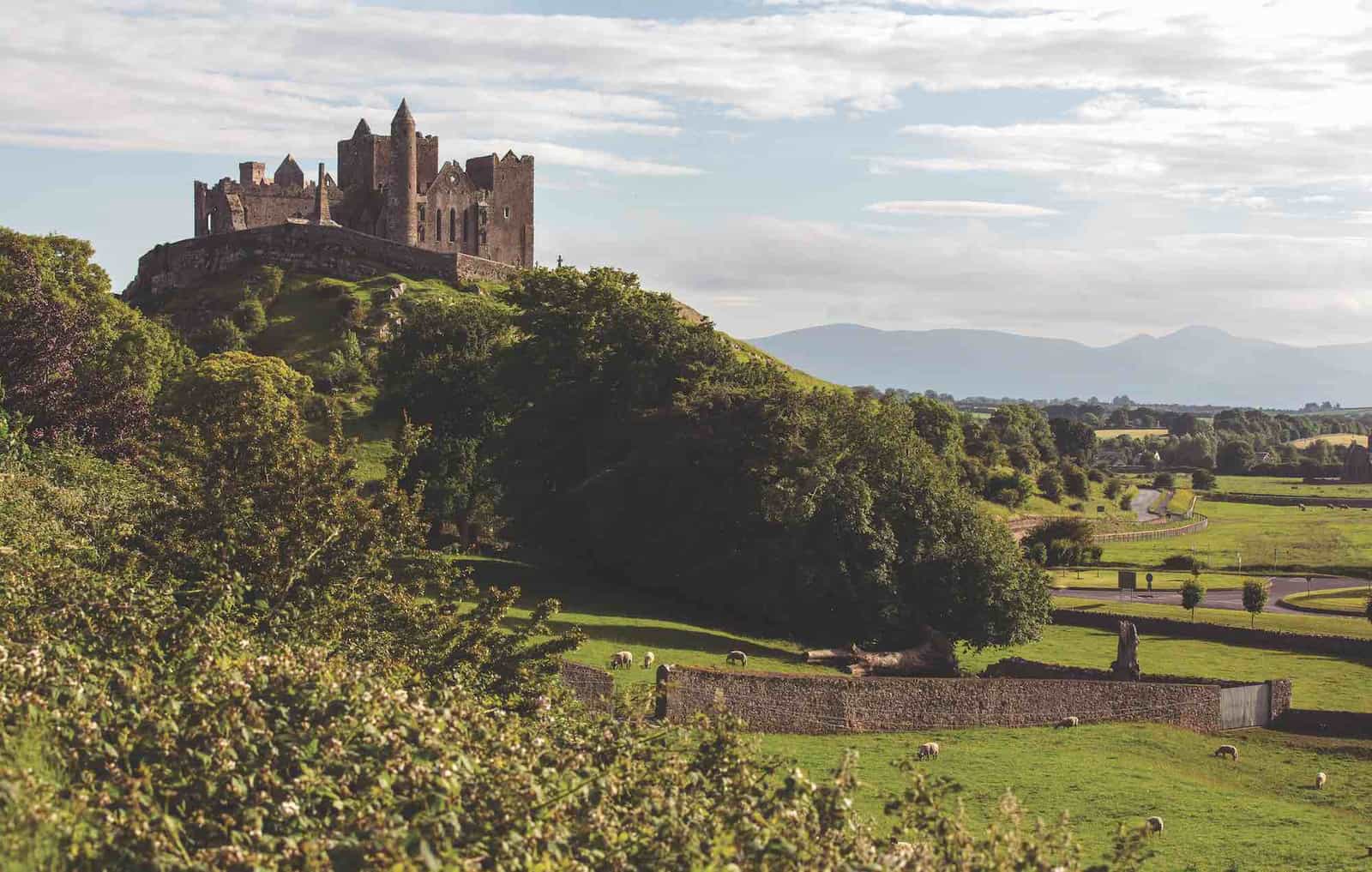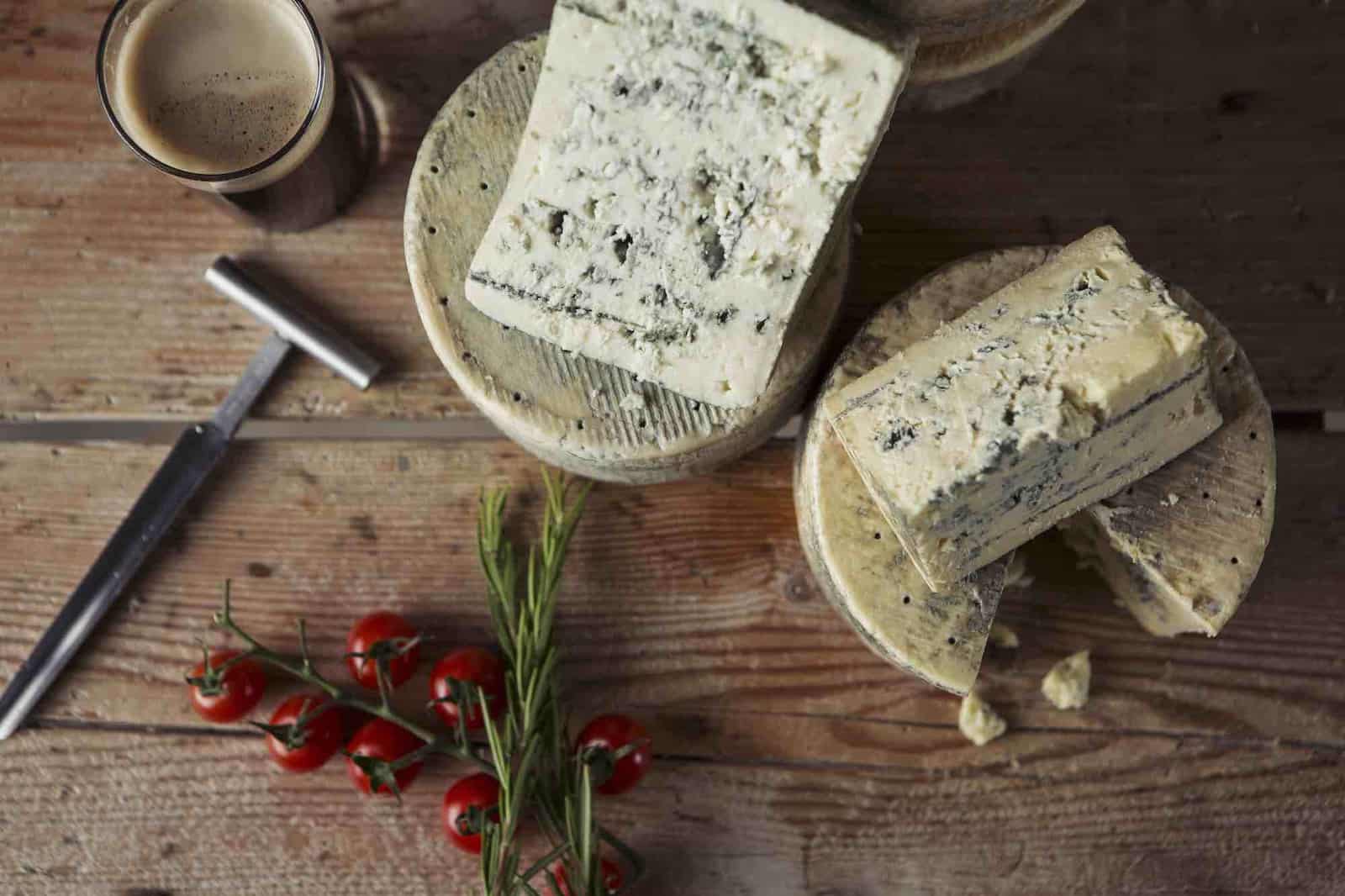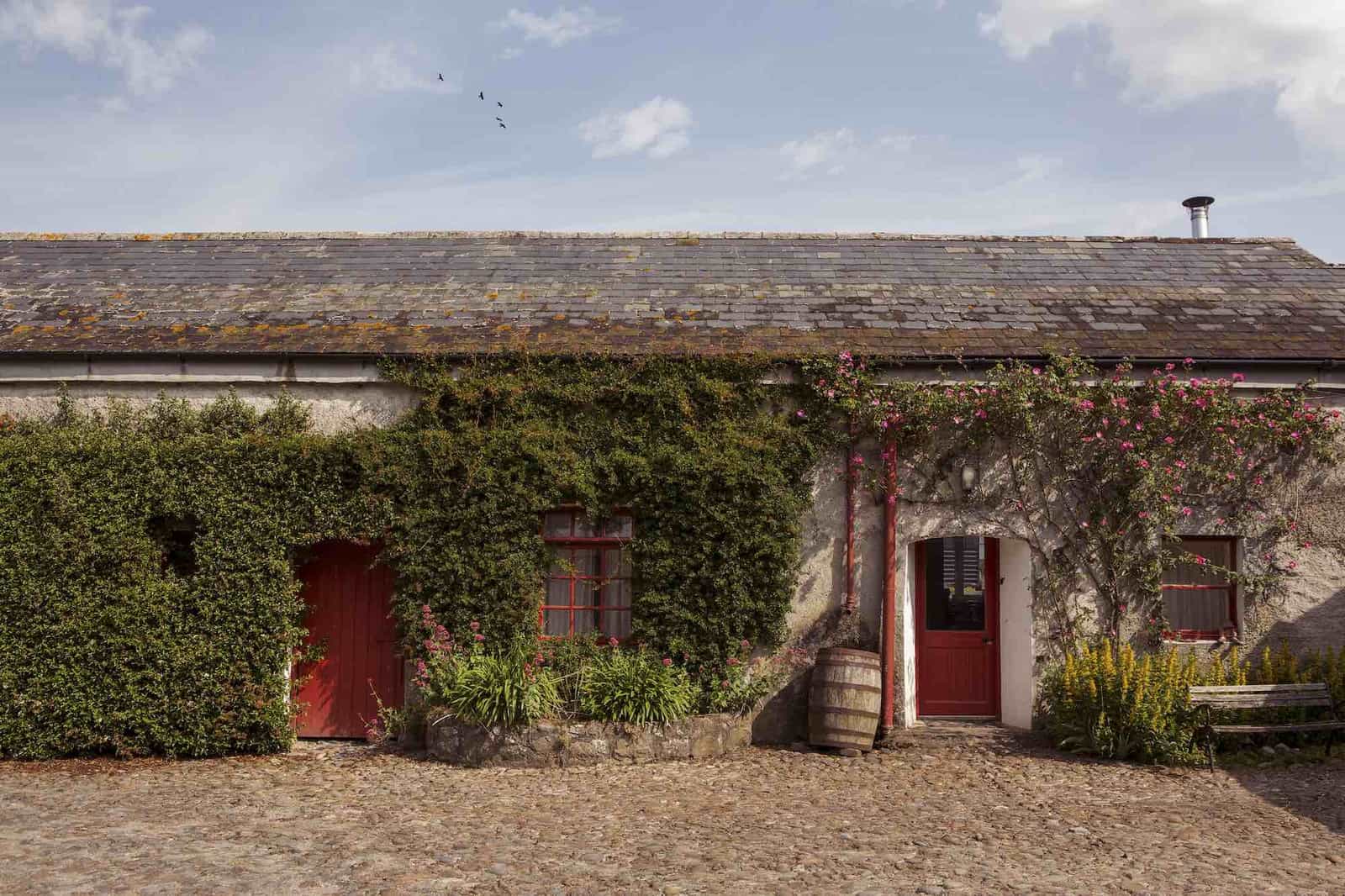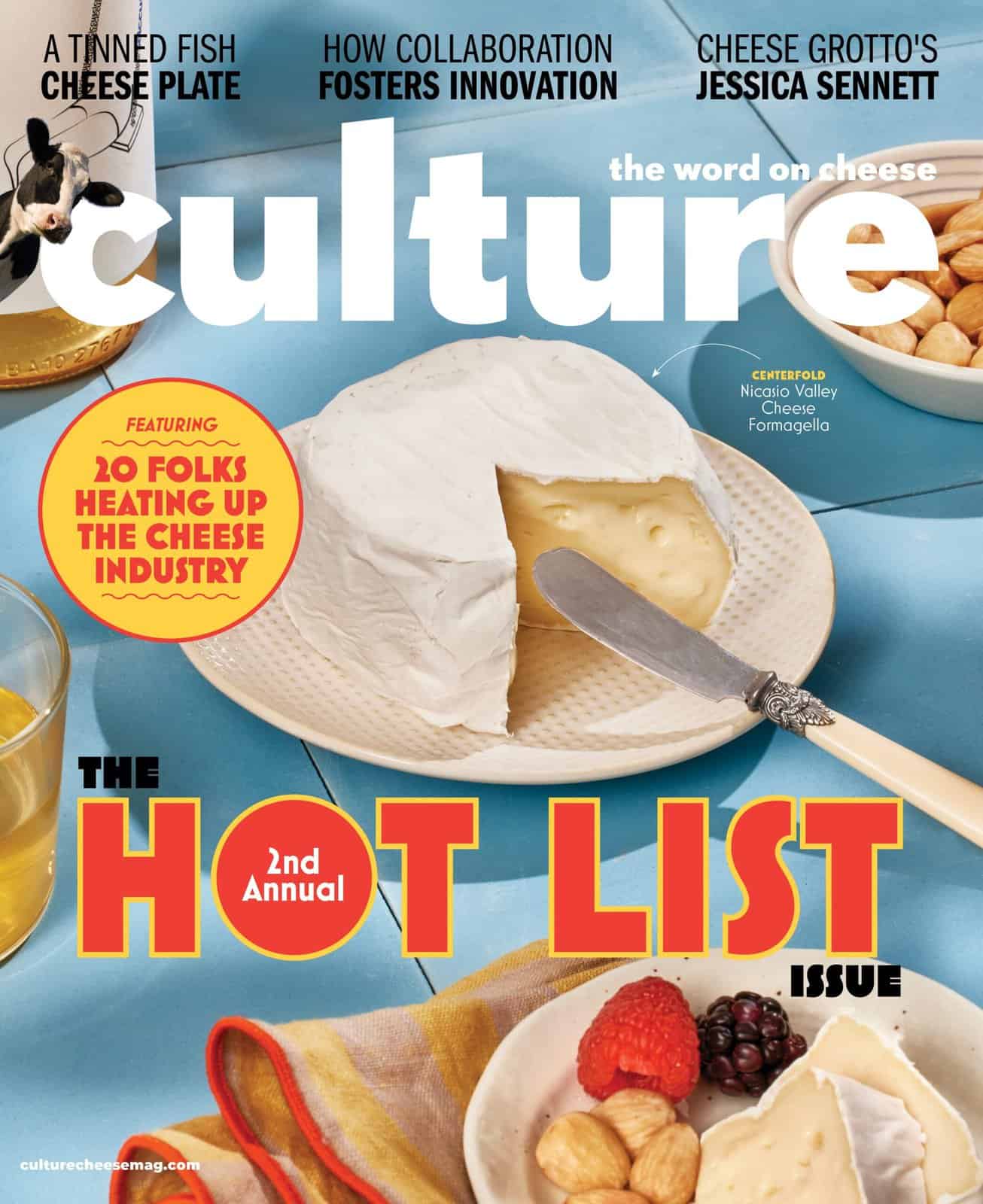
We’ve had five days of quality assurance visitors,” says Sarah Furno, co-director of Cashel Farmhouse Cheesemakers, when I meet her at her dairy in Tipperary, Ireland. “It’s been very, very, very intense.” Furno, who crackles with energy and is as passionate about her business as any artisan you’re likely to meet, seems OK with intense.
Besides running cheesemaking operations at Cashel, she’s also involved with a variety of local and national food organizations—including the Tipperary Food Producers Network and the Taste Council of Ireland—and is mother to Leila (age four), Anna (age 11), and Luca (age 13). Her husband, Sergio Furno, is a tall, calm Italian who hails from a village near Arborio in Lombardy. They met at Aberystwyth University in Wales, where they would return from vacations at home with treats for one another: sacks of risotto rice for her, artisanal Irish cheese for him. That cheese wasn’t just any cheese—it was Cashel Blue, Ireland’s first farmhouse blue. Sarah’s parents, Louis and Jane Grubb, developed the groundbreaking wheel in 1984, and Sarah was the heir apparent to Cashel Farmhouse Cheesemakers. The only problem: She was set on building a career in wine.
From Milk to Miracle
Louis Grubb is square-shouldered, with a broad, crooked smile. Like Sarah, he didn’t originally intend to carry on his parents’ tradition of farming, but his father’s premature death wrested him out of his new career at the Irish Agriculture and Food Development Authority. In 1979, Grubb transformed the 120-acre mixed Beechmount Farm into a dairy farm, establishing a herd of 90 Friesian cows, but he quickly became disillusioned. “Just churning out volume is a bit boring,” Grubb says. “And you have to be highly efficient to make it work.”
To make things more interesting—and profitable—Louis decided to turn to cheese-making. Enter Jane Grubb, Louis’ wife. A trained chef, she dove headlong into cheese-making courses run by Veronica Steele, a pioneer of modern Irish farmhouse cheese. “The first day was the beginner’s course,” Jane recalls, before adding, with a genteel smile, “and the second day was the advanced course.”
It was an exciting time for the Grubbs to enter the cheese world. The late 1970s saw the beginning of the Irish farmhouse cheese movement in West Cork, with pioneers like Durrus, Coolea, and Steele’s Milleens all beginning production. Seeing a market flush with farmhouse washed-rind cheeses—a nod to monastic Irish tradition—the Grubbs tried a different tack, producing a Caerphilly, a Cheshire-style, and a quark over a four-year period. But growth was slow…until Jane had an idea.
Noting that Danish Blue was being imported into Ireland, she suggested the farm develop an Irish version and corner the market. Her notion was revolutionary: While there had been occasional attempts to mass-produce a blue cheese in Ireland, an artisan blue was rarer than a six-leaf clover. In fact, at that time, “the average Irish person didn’t know what blue cheese was, and actually found it pretty scary,” says Sarah. Checking out a recipe for Danish Blue from the local library, Jane experimented on the Grubbs’ kitchen stove with an heirloom copper jam pan (later upgraded to a copper cider vat). Big linen bags full of draining curds dripped into buckets set on the concrete floor, while cheeses ripened in the earthen cellar below (until the Grubbs were advised that Penicillium roqueforti, the mold used in Cashel Blue, could undermine the house’s structural stability).
After two years of fine-tuning, the result wasn’t a true Danish Blue. Instead, it was something creamier and rounder—more like a soft-edged Stilton, rich and spicy with a buttery texture. By happy accident, as is so often the case in cheesemaking, Jane had struck gold.
The Next Generation
These days, Cashel Blue is produced in a modern, professional creamery—the rooms full of stainless steel equipment where the curd is cut, young cheeses are brined, and aged rounds are wrapped in distinctive gold foil are a far cry from the stripped-down, mad-scientist beginnings of the farmhouse kitchen.
In 2016, Cashel Farmhouse Cheese-makers turned out 350 metric tons of cheese. But there was a time when the future of the company was uncertain. In 2003, Jane had taken a step back from the business. The years of waking at 3 a.m. to prep the starter culture had left her spent, with a bad case of cheesemaker’s back to boot. Louis was running the company with only two employees: a full-time secretary and a part-time bookkeeper. And while Sarah and Sergio had permanently moved to Tipperary, they were set to launch a wine distribution business, not take over the family farm. “They wanted to do their own thing,” says Louis. “Just because one generation wants to do something doesn’t mean the next generation should be forced to [follow suit].”
But they eventually did. Concerned that the sacrifice and energy that built Cashel Farmhouse Cheesemakers could go to waste at a time when other farmhouse blues were appearing on the market, Sarah and Sergio chose to join the family business—but not without first adding their own spin.
Wine and Cheese
“[We needed] an injection of energy,” says Sarah. “We’d gotten into a cycle of farming, making cheese, and not looking after it post vat.” For the wine professionals, an opportunity to apply their passion to cheese presented itself: developing an affinage program for Cashel Blue. “Initially we set about tasting each vat of cheese at the point of blueing, assessing for acidity, texture, and flavor development,” Sarah explains. Cheeses with high acidity and very clean flavors were segregated for long-term aging (16 to 22 weeks), those with creamier profiles were given medium-term aging (eight to 14 weeks), and the more unusual, fast-developing wheels were sold young to an eager domestic market. “We don’t standardize because farmhouse cheese has variability,” she says. “[But] the role of [affinage] is to manage that variability.”
Today, Cashel has around 31,000 cheeses aging at any given time—roughly double what was being stored in 2003. The dairy exports to countries all over the world and has a partnership with Kerrygold in the United States. It has even been eaten (and apparently enjoyed) by Queen Elizabeth II during a state visit to Ireland in 2012.
“Cheese isn’t one person. It’s the sum of its parts. It’s the sum of all our personalities, all our different energies, as well as the place, milk, and [other ingredients].”
Community Spirit
For Sarah, there’s little romance surrounding the hardships of traditional cheesemaking. “I saw my cousin and my mother burn out,” she says. “Wrapping a cheese by hand doesn’t make it better. In fact, it’s a very tedious job.” This thinking—and the need to meet demand—resulted in Cashel’s semi-mechanized dairy. For Sergio and Sarah, it’s a successful marriage of technology and tradition, and they’re sensitive to the ways in which automation could threaten quality. The curds for Cashel Blue are hand-cut and hand-stirred in the vat, but afterward are automatically rotated when the cheese is drained in molds. The rotation apparatus was designed by Louis and can turn 400 cheeses simultaneously on small rods. The whey is also routed out to feed the bacteria at the on-site water treatment plant.
After 48 hours, the cheeses are placed (by hand) into brine baths for 24 hours before being pierced (by machine) to allow the blue to spread. While over 95 percent of their business is Cashel Blue, the company also produces three other cheeses. Shepherd’s Store, a semi-hard, sheep’s milk Gouda-style, is a recent addition, as is Cashel Blue Organic, which uses milk from a single herd of local Montbéliarde, Friesian, and Norwegian Red cows. Crozier Blue, created by head cheese-maker Geurt van den Dikkenberg in 1992, remains Ireland’s only sheep’s milk blue. All of Cashel’s cheeses are made using vegetarian rennet, a decision prompted by the UK’s mad cow disease breakout of the 1990s. (The illness is most frequently transmitted to humans via foods contaminated with the brain, spinal cord, or digestive tract of infected animals; traditional rennet is derived from a calf’s stomach.)
Eponymous Epilogue
Toward the end of my visit, Sarah, her family, and I drive to the nearby town of Cashel, to visit the castle after which the cheese is named. At the foot of the Rock of Cashel—a hulking medieval fortress perched on a small hill and surrounded by miles of flat countryside—Sarah introduces me to Michael Cross and his mother, Margaret, who sell sheep’s milk ice cream made with the same milk that goes into Crozier Blue and Shepherd’s Store. We walk on, Sarah pointing out where the 500-strong sheep herd grazes while Sergio chases the children around the fields. As we gaze at the Rock of Cashel, an amalgam of buildings and architectural styles and purposes, I’m reminded of something Sarah said just after we met: “Cheese isn’t one person. It’s the sum of its parts. It’s the sum of all our personalities, all our different energies, as well as the place, milk, and [other ingredients].”
I ask Sarah if she would one day like her children to take over the business. “One should only get involved if you have something to contribute and if it excites you,” she replies carefully. “Responsibility alone is not sufficient a reason.”
Sounds just like her father.
Photographed by Denis Vahey


